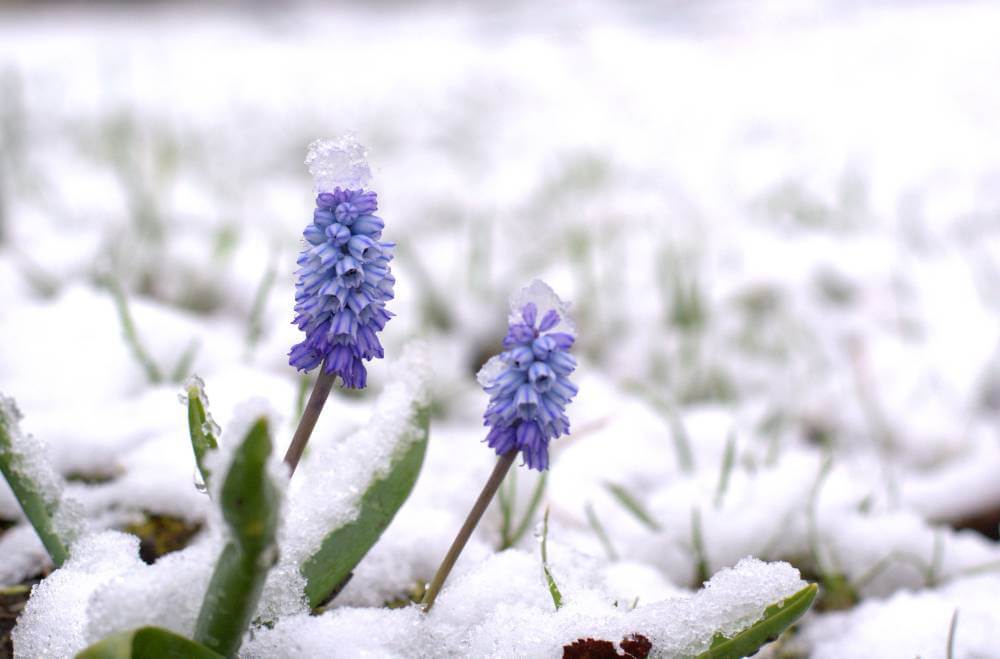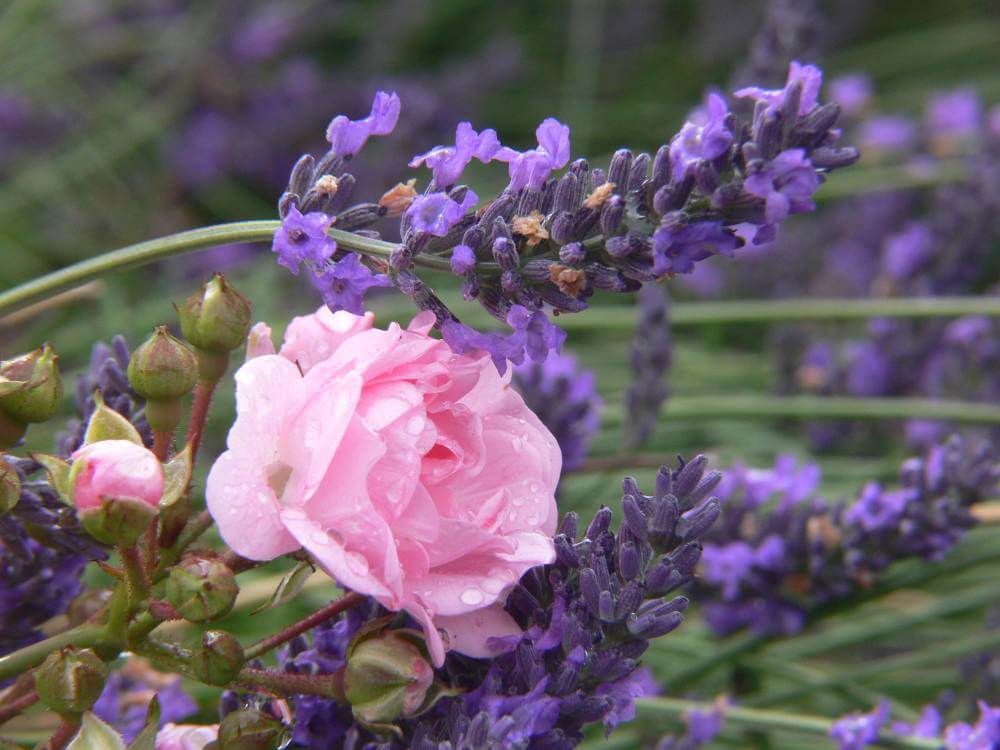Hey there, fellow gardeners! Join me today as we dive into the delightful world of growing lemon balm, a herb that brings citrusy bliss to your garden and kitchen alike.
A Zesty Introduction to Lemon Balm
Lemon balm (Melissa officinalis) is a fragrant herb known for its lemony scent and refreshing taste. Belonging to the mint family, it’s characterized by its vibrant green leaves and subtle serrated edges.
This herb is not just a delight for the senses but also boasts a rich history of use in traditional medicine and culinary arts. Whether you’re brewing a soothing tea to unwind after a long day or infusing oils for homemade skincare products, lemon balm adds a bright and cheerful touch to any garden.
Benefits and Typical Uses of Lemon Balm: More Than Just Flavor
Beyond its delightful flavor, lemon balm offers a plethora of benefits. It is renowned for its calming properties, making it a popular choice for herbal teas that promote relaxation and ease stress. Lemon balm’s essential oils, including citronellal and geraniol, contribute to its aromatic profile and therapeutic effects. Rich in antioxidants such as rosmarinic acid, it supports digestive health and provides a natural boost to the immune system.
In the kitchen, its fresh leaves add a citrusy note to salads, sauces, and desserts, enhancing both taste and aroma.
Different Varieties: Exploring Lemon Balm’s Diversity
Lemon balm comes in several varieties, each offering its unique characteristics. Common lemon balm (Melissa officinalis) is the most widely grown type, prized for its strong lemon scent and culinary versatility. Variegated lemon balm adds visual interest to gardens with its green and cream-colored foliage, while lemon balm ‘All Gold’ showcases golden leaves that brighten any garden corner. Each variety not only enhances the aesthetic appeal of your garden but also offers subtle variations in flavor and growth habits.
Annual or Perennial: Lemon Balm’s Growing Cycle
Lemon balm is a hardy perennial herb in most climates, meaning it can survive for several years under the right conditions. It thrives in USDA hardiness zones 4-9, where winters are mild enough to support its growth.
In colder regions, lemon balm may behave more like an annual, requiring replanting each spring or protection from frost to overwinter successfully. Understanding its growth cycle helps in planning and ensuring a continuous supply of fresh leaves year-round.
Preferred Planting Season: Timing Is Everything
For optimal growth, plant lemon balm in early spring after the last frost has passed. This timing allows the herb to establish strong roots before the heat of summer, ensuring robust growth and abundant foliage. In warmer climates, planting can also be done in early fall to take advantage of cooler temperatures and reduce heat stress on young plants. Whether you’re starting from seeds or planting seedlings, providing the right conditions at the outset sets the stage for a thriving lemon balm garden.
Sun or Shade Preference: Finding the Perfect Spot
Lemon balm thrives in well-drained soil with moderate moisture levels and benefits from at least 6 hours of sunlight daily. While it prefers full sun, it can tolerate partial shade, especially in hot climates where afternoon shade helps prevent leaf scorching. Choosing the right location ensures healthy growth and encourages the development of aromatic leaves packed with essential oils.
Winter Care Tips: Keeping Lemon Balm Cozy
During winter, lemon balm benefits from some extra care to survive colder temperatures. Mulch around the base of the plant with organic materials like straw or leaves to insulate the roots and regulate soil temperature. In regions with harsh winters, consider planting lemon balm in containers that can be brought indoors or placed in a protected area. Pruning back the foliage in late fall helps reduce the risk of frost damage and encourages healthy regrowth in the spring, ensuring your lemon balm plants return with vigor.
Growing from Seeds vs. Seedlings: Choosing Your Starting Point
Lemon balm can be grown from seeds or purchased as seedlings, with each method offering distinct advantages. Starting from seeds allows you to select specific varieties and ensures a cost-effective approach for larger plantings.
However, seeds can be slow to germinate and require consistent moisture and warmth to sprout. Opting for seedlings provides a head start with established plants that can be transplanted directly into the garden or containers, ensuring quicker establishment and earlier harvests of fragrant leaves.
Growing Lemon Balm Indoors or Outdoors: Choosing the Right Environment
Whether you have a sunny garden or limited space indoors, lemon balm adapts well to both environments. Outdoors, plant lemon balm in well-drained soil with full sun to partial shade exposure. Ensure the soil remains moist but not waterlogged, especially during hot summer months.
In pots or containers, lemon balm thrives on balconies or windowsills receiving adequate sunlight. Indoors, provide at least 6 hours of sunlight daily or supplement with grow lights. Regularly prune to maintain compact growth and harvest fresh leaves for culinary use.
Best Soil for Growing Lemon Balm: Creating the Ideal Bed
Lemon balm flourishes in loamy, well-draining soil enriched with organic matter. Avoid heavy clay soils that retain excessive moisture, which can lead to root rot. Incorporate compost or aged manure into the soil before planting to enhance fertility and improve drainage. Mulch around the base of lemon balm plants to conserve moisture and suppress weed growth, ensuring optimal conditions for vigorous growth and aromatic leaf production.
Instructions for Growing Lemon Balm in a Pot: Container Gardening Tips
Growing lemon balm in pots or containers is ideal for small spaces or areas with poor soil quality. Choose a container with drainage holes to prevent waterlogging and use a lightweight, well-draining potting mix. Plant lemon balm seedlings or cuttings in the container, ensuring they are spaced apart for adequate airflow. Place the pot in a sunny location, such as a patio or balcony, and water regularly to keep the soil evenly moist. Fertilize every 4-6 weeks during the growing season with a balanced fertilizer to support healthy growth and abundant foliage.
Hydroponic Cultivation of Lemon Balm: Growing Without Soil
Hydroponic systems offer a controlled environment for growing lemon balm indoors or in limited outdoor spaces. Use a nutrient-rich hydroponic solution and adjust pH levels to optimize nutrient uptake. Plant lemon balm seedlings in net cups filled with an inert growing medium like perlite or coconut coir. Ensure adequate lighting with grow lights or natural sunlight exposure for at least 12-16 hours daily. Monitor water levels and nutrient concentrations regularly to maintain optimal growth conditions and harvest fresh, flavorful leaves year-round.
Watering Instructions for Lemon Balm: Keeping Moisture in Check
Lemon balm prefers consistently moist soil, especially during hot weather, to thrive and produce aromatic leaves. Water plants deeply but infrequently to encourage deep root growth and resilience against drought. Avoid overwatering, as it can lead to root rot and other moisture-related issues.
Check the soil moisture levels regularly by inserting your finger into the soil. Water when the top inch of soil feels dry and adjust watering frequency based on weather conditions and plant needs. Mulching around lemon balm plants helps retain soil moisture and reduces water evaporation.
Companion Planting with Lemon Balm: Enhancing Garden Harmony
Lemon balm makes an excellent companion plant for herbs, flowers, and vegetables due to its pest-repelling properties and beneficial effects on neighboring plants. Plant lemon balm near tomatoes to deter pests like aphids and whiteflies, or alongside roses to enhance their fragrance and deter aphids.
It also attracts beneficial pollinators such as bees and butterflies, promoting biodiversity and increasing garden productivity.
Planting Foes: Plants to Keep Away from Lemon Balm
While lemon balm is a beneficial companion plant, it can adversely affect the growth of certain crops due to its allelopathic properties. Avoid planting lemon balm near beans, peas, or cabbage family plants, as it may inhibit their growth and development. These plants are sensitive to compounds released by lemon balm roots and foliage, which can interfere with nutrient uptake and overall health. Plan garden layouts carefully to maximize the benefits of companion planting while minimizing potential negative interactions.
The Attraction Towards Pollinators: Boosting Garden Biodiversity
Lemon balm’s fragrant flowers attract a variety of pollinators, including bees, butterflies, and hummingbirds, essential for garden biodiversity and ecosystem health. Plant lemon balm near vegetable and fruit crops to enhance pollination and improve yields. Its nectar-rich blooms provide a valuable food source for pollinators throughout the growing season, supporting local wildlife and enhancing garden productivity. Encourage pollinator activity by planting lemon balm in sunny, sheltered locations with ample flowering plants nearby.
Pruning Instructions for Lemon Balm: Maintaining Vigorous Growth
Regular pruning is essential to keep lemon balm plants healthy, compact, and productive throughout the growing season. Trim back spent flower stems to encourage continuous blooming and prevent self-seeding, which can lead to invasive growth. Remove damaged or yellowing leaves to promote airflow and reduce the risk of disease.
Prune lemon balm plants in early spring to remove dead or overgrown stems and shape the plant for bushier growth. Harvest fresh leaves regularly for culinary use, ensuring a steady supply of flavorful foliage.
Pest Treatment for Lemon Balm: Natural Solutions for Common Pests
Lemon balm is relatively pest-resistant but may occasionally encounter issues with aphids, spider mites, or powdery mildew, especially in humid conditions. Monitor plants regularly for signs of pests, such as yellowing leaves or sticky residue on foliage. Use a strong spray of water to dislodge aphids and spider mites from lemon balm leaves or apply insecticidal soap as a natural control method.
Prevent powdery mildew by maintaining good air circulation around plants and avoiding overhead watering. Organic mulches can also deter pests while enriching the soil with nutrients.
Unleash the Potential of Lemon Balm in Your Garden!
Now that you’ve learned all about growing lemon balm – its calming benefits, citrusy zest, and how to care for it – the real fun begins! Whether you’re brewing soothing teas, enhancing culinary delights, or simply enjoying its fragrant presence in your garden, lemon balm offers endless possibilities. This versatile herb is a must-have for any home gardener looking to add freshness and flavor to their outdoor oasis.
Explore more gardening tips and herb profiles on my blog to cultivate a thriving garden year-round!







